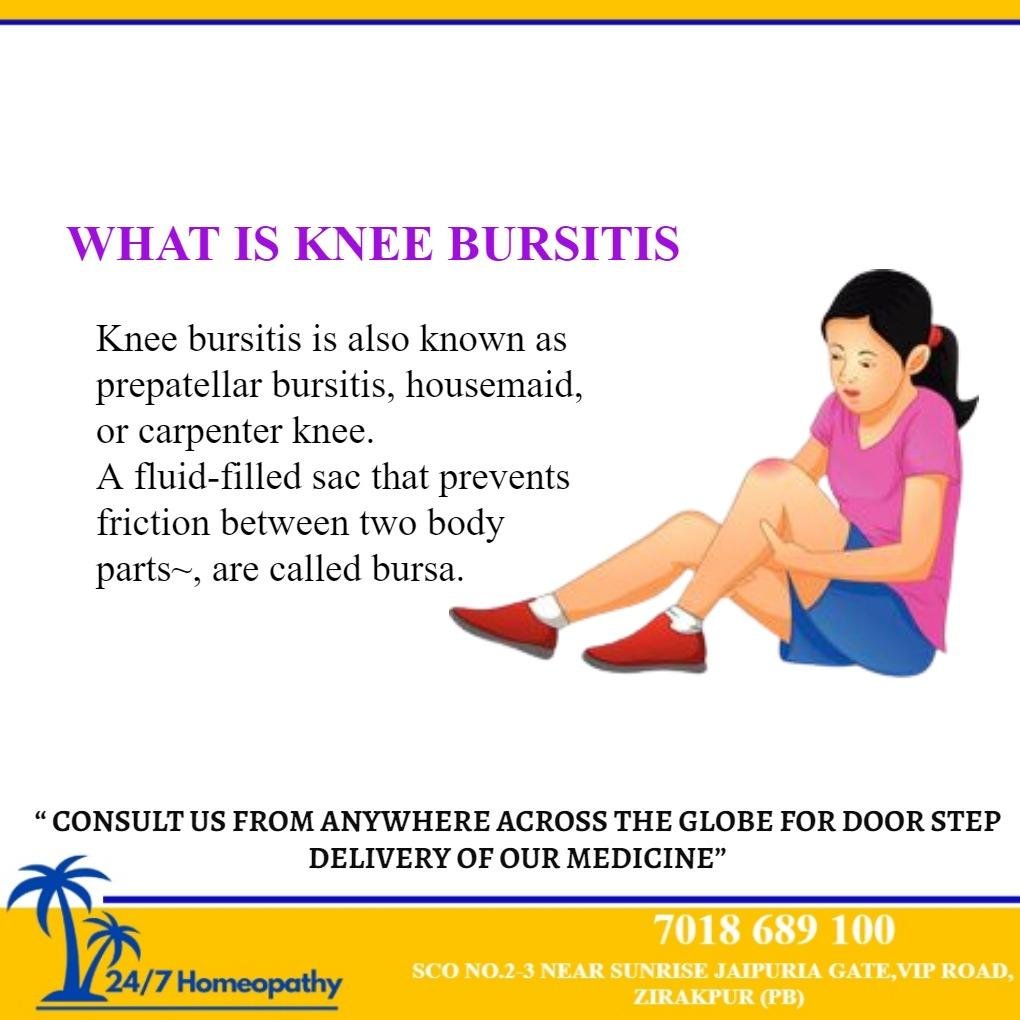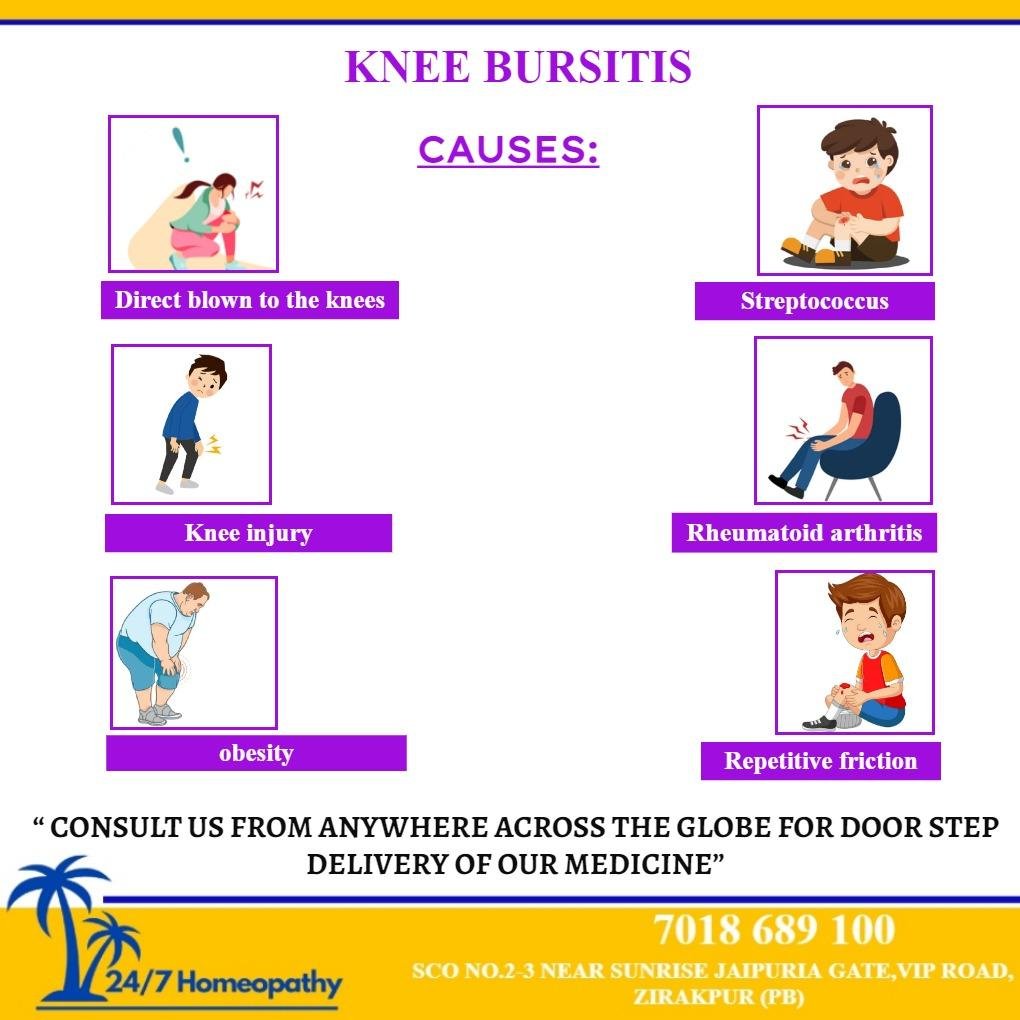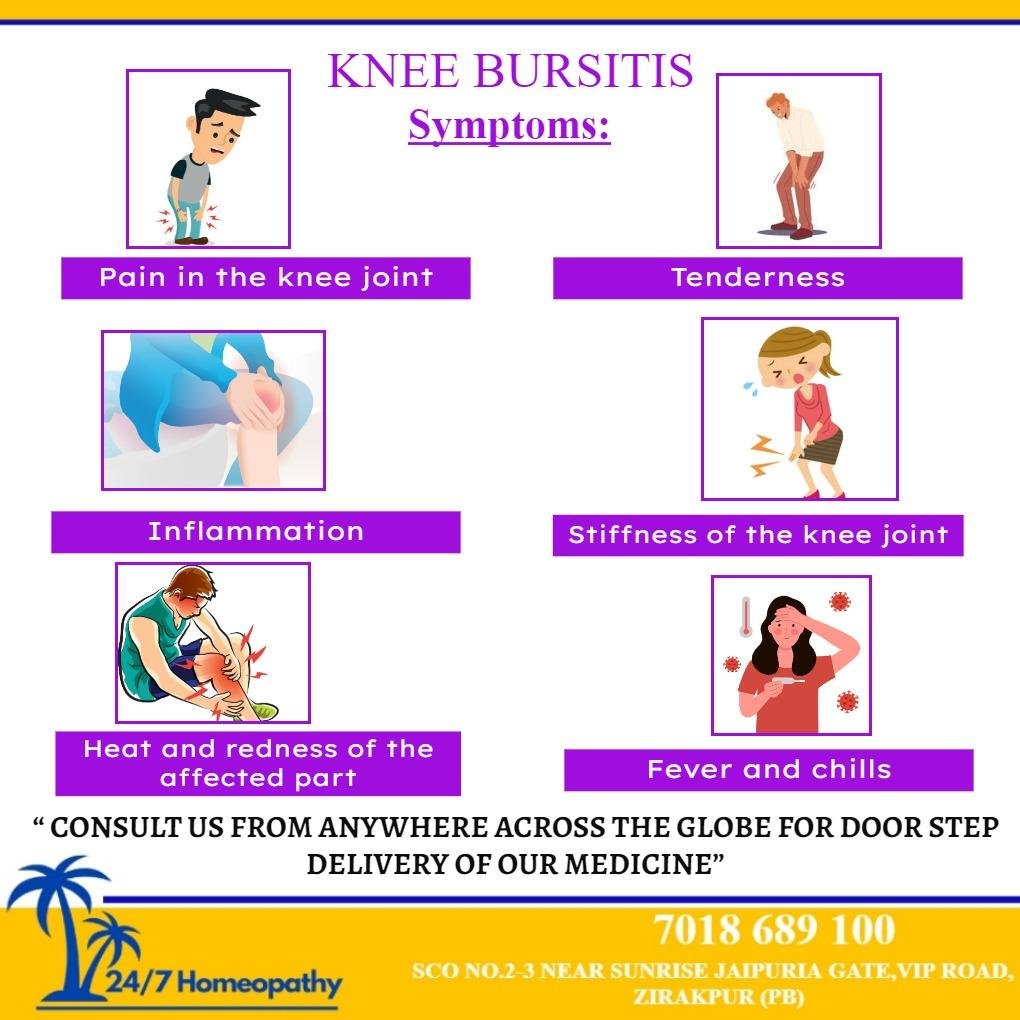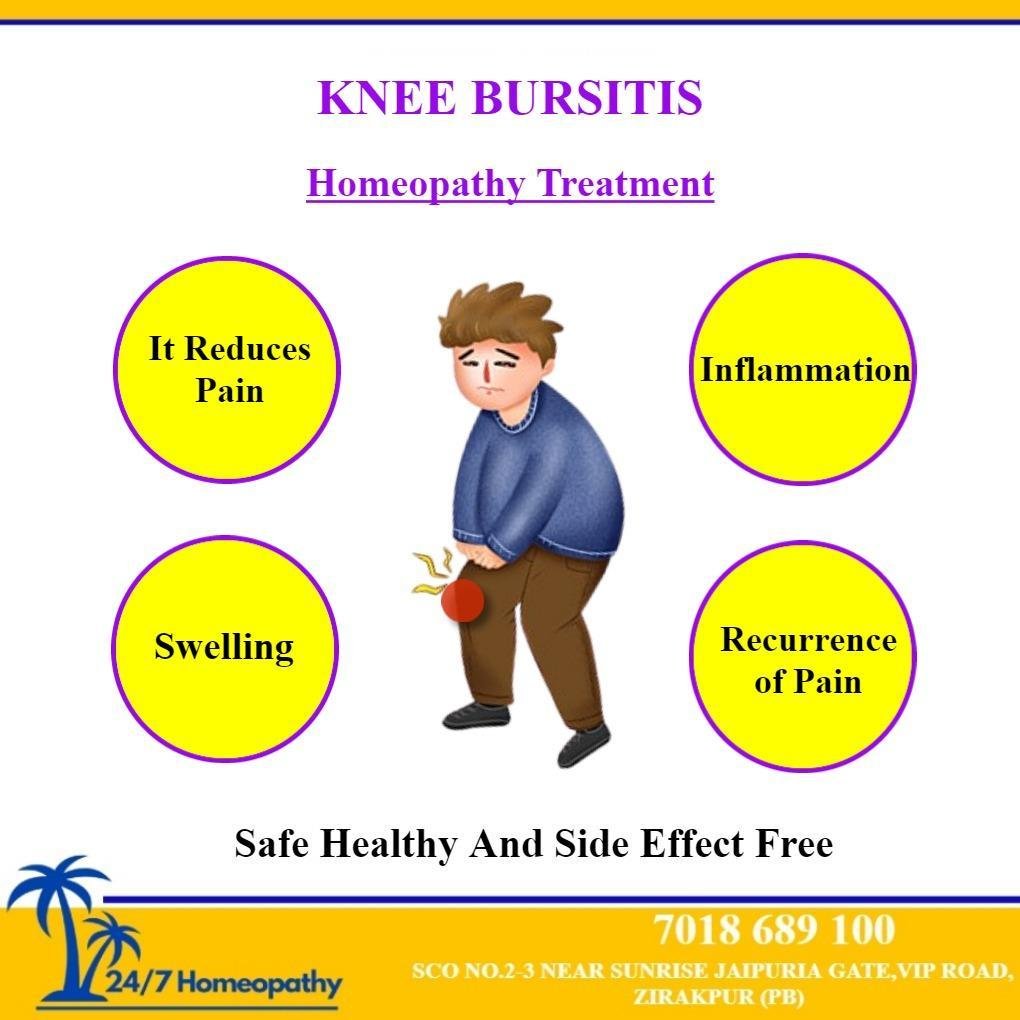Knee Pain
Knee pain is a pain in or around the knee. It is caused by a sudden injury, an overuse injury, or such conditions are arthritis.
pain is a common complaint among adults and often associated with daily activities like walking, bending, lifting, and standing. Athletes who run or play sports that involve jumping or quick rotating also experience pain in the knee.
pain is a vulnerable joint that bears great stress from everyday activities, such as lifting and kneeling, jogging, and aerobics.
The knee is formed of tibia, femur, patella, fibula.
The components of each of these compartments can suffer from injury, repetitive strain, or diseases. Running long distances can cause pain to the knee joint.

Causes of Pain in the Knee:
- Injuries:
a. Sprain (ligament sprain).
b. Strain (muscle strain).
c. Tear of the meniscus.
d. Dislocated knee cap. - Osteoarthritis.
- Tendinitis.
- Fractures:
a. Tibial fracture.
b. Femoral fracture. - Bruises of the knee.
- Common deformities of the knee:
a. Genu valgum.
b. Genu varum. - Knee joint dislocation.
- pain in the knee is more common in cold temperatures than in normal temperatures.
- Pain in the knee due to less physical movement and it can be due to more physical movement.
- Deep vein thrombosis.
- Knee effusion.
- Referred pain – pain can come from the hip joint or lumbar spine.

Pain in the Knee Symptoms:
- Stiffness.
- Swelling of the knee joint.
- Crackling sound while a person sits or stands.
- Inability to fully straighten the knee.
- Redness or warmth to the touch.
- Difficulty in walking or standing.
- Pain while bending or straightening the knee.
- In acute pain and mild swelling.
- In chronic pain, crackling sound, swelling, stiffness, difficulty in walking.

Diagnosis:
- Physical Examination: Inspect knee for swelling or tenderness pain.
- Ask the patient to sit or stand for 2 to 3 times you can hear a crackling noise.
- X-ray.
- CT-scan.
- MRI scan
- Laboratory Analysis: Suspected an inflammation a small amount of fluid is removed from within your knee joint with a needle this procedure is called arthrocentesis.
Prevention:
- Cushioned insoles can reduce stress on your knee.
- If pain in the knee has just started then:
a. Rest and avoid activities that cause pain.
b. Avoid putting weight on the knee. - Keep your knee raised as much as possible to bring down swelling.
- Wear an elastic bandage, which may reduce pain and swelling.
- Sleep with a pillow underneath or between knees.
- Avoid running downhill, walk down instead.
- If you have flat feet, try special arch support.
- Reduce the amount of exercise.
- Lose weight if you are overweight.
Homeopathic treatment:
- At 24/7 Homeopathy Clinic, there is a vast scope for the treatment of pain in the knee.
- We believe in needlework treatment.
- Many factors contribute to the selection of medicine like mental stress, physical stress such as pain, stiffness, the crackling of sound, etc.
- Our medicines are well selected by a team of doctors.
- Improving the efficiency of knee joints and ligaments.
- The most important part of homeopathic medicine is to treat the patient as a whole like mental stress and anxiety, not just the pain and stiffness.
- There are no side effects of homeopathic medicines if you are taking them under the doctor’s advice.
